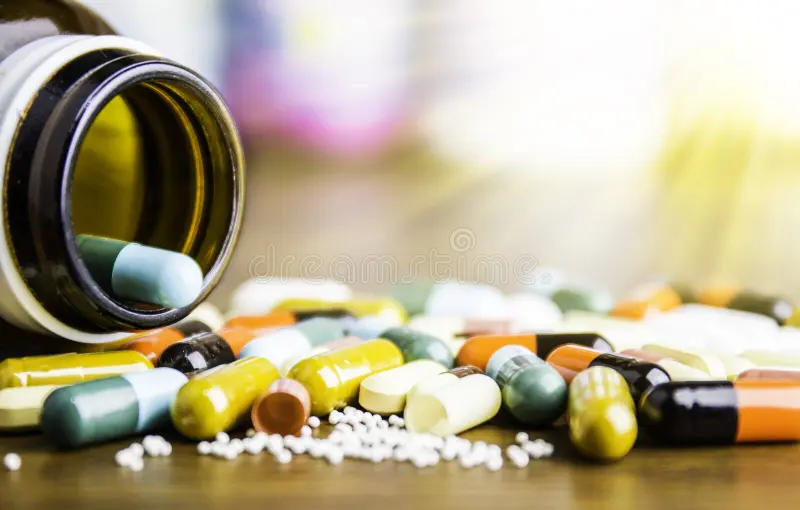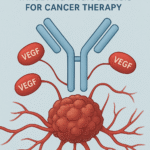Peptic Ulcer Disease
Introduction
Peptic ulcer disease (PUD) is one of the most common gastrointestinal disorders worldwide, affecting millions of people annually. It refers to the development of open sores (ulcers) in the lining of the stomach, the first part of the small intestine (duodenum), or occasionally the lower esophagus. Despite being a treatable condition, peptic ulcers can significantly impair quality of life and may lead to severe complications if neglected, such as bleeding, perforation, or gastric outlet obstruction.

Over the past few decades, our understanding of peptic ulcers has evolved remarkably. Earlier, excessive stomach acid was considered the sole culprit, but the discovery of Helicobacter pylori revolutionized the field by uncovering a bacterial cause. Lifestyle factors, nonsteroidal anti-inflammatory drugs (NSAIDs), and genetic predispositions also play important roles.
In this article, we will explore peptic ulcer disease in detail, focusing on its pathophysiology, causes, risk factors, treatment, and prevention. The aim is to provide a complete, evidence-based understanding that is useful for healthcare professionals, students, and health-conscious readers.
Pathophysiology of Peptic Ulcers
The development of peptic ulcers is essentially a consequence of imbalance between aggressive and defensive factors within the gastrointestinal mucosa.
Aggressive Factors
- Gastric Acid (HCl)
- Secreted by parietal cells of the stomach, hydrochloric acid aids in digestion but is corrosive to mucosal surfaces if uncontrolled.
- Excess secretion (hyperchlorhydria), as seen in Zollinger–Ellison syndrome or certain genetic conditions, increases ulcer risk.
- Pepsin
- An enzyme that digests proteins. When combined with acid, it exacerbates mucosal injury.
- Helicobacter pylori
- A spiral-shaped, Gram-negative bacterium that colonizes the gastric mucosa.
- Produces urease, breaking down urea into ammonia, neutralizing local acid but damaging epithelial cells.
- Induces chronic gastritis, disrupts mucosal defense, and stimulates gastrin secretion, leading to more acid production.
- NSAIDs
- Inhibit cyclooxygenase (COX) enzymes, reducing prostaglandin synthesis.
- Prostaglandins normally promote mucus and bicarbonate secretion and maintain mucosal blood flow.
- Their inhibition leaves the mucosa unprotected against acid.
- Bile Salts & Smoking
- Reflux of bile salts and toxins in cigarette smoke further damage the mucosal barrier.
Defensive Factors
- Mucus-Bicarbonate Barrier
- Forms a protective layer that neutralizes acid near the mucosal surface.
- Epithelial Integrity & Regeneration
- Rapid turnover of gastric and duodenal epithelial cells helps maintain mucosal defense.
- Mucosal Blood Flow
- Adequate perfusion delivers oxygen and nutrients while removing toxic metabolites.
- Prostaglandins
- Enhance mucus, bicarbonate secretion, and blood flow.
Imbalance Leading to Ulceration
When aggressive factors overwhelm protective mechanisms, mucosal erosion occurs. If damage extends beyond the muscularis mucosa into the submucosa, it forms a peptic ulcer.
- Gastric ulcers usually occur in the stomach lining due to defective defense mechanisms.
- Duodenal ulcers are more commonly due to excess acid and H. pylori-induced hypersecretion.

Causes of Peptic Ulcers
Several mechanisms contribute to the development of ulcers.
1. Helicobacter pylori Infection
- Found in 60–80% of gastric ulcers and 90–95% of duodenal ulcers.
- Transmission is often oral–oral or fecal–oral.
- Causes chronic gastritis, reduces protective mucus, and enhances acid secretion.
2. NSAID Use
- Long-term or high-dose use of aspirin, ibuprofen, diclofenac, or naproxen is a leading cause of ulcers, particularly in older adults.
- Ulcer risk increases with concurrent use of corticosteroids or anticoagulants.
3. Excess Acid Production
- Conditions like Zollinger–Ellison syndrome (gastrinoma) or multiple endocrine neoplasia type 1 lead to severe hyperacidity.
4. Lifestyle Factors
- Smoking decreases bicarbonate secretion and impairs healing.
- Alcohol irritates gastric mucosa and promotes inflammation.
- Stress does not directly cause ulcers but may worsen symptoms and delay healing.
5. Genetic and Familial Factors
- Family history increases risk, possibly due to genetic variations affecting acid secretion or mucosal defense.
6. Other Medical Conditions
- Liver cirrhosis, chronic kidney disease, and chronic obstructive pulmonary disease (COPD) are associated with increased ulcer prevalence.
- Critically ill patients may develop stress ulcers due to reduced mucosal blood flow.
Risk Factors
Certain populations and habits increase susceptibility:
- Age > 50 years (gastric ulcers more common)
- Male gender (duodenal ulcers more common)
- Chronic NSAID/aspirin use
- Positive family history of ulcers
- Excessive alcohol intake
- Cigarette smoking
- Comorbid conditions (e.g., CKD, cirrhosis, diabetes)
- Severe physiological stress (burns, sepsis, trauma)
- Uncontrolled H. pylori infection
Clinical Features
Symptoms
- Epigastric pain: Burning, gnawing, or aching pain often related to meals.
- Gastric ulcer: Pain worsens with food.
- Duodenal ulcer: Pain improves with food but recurs 2–3 hours later.
- Bloating, belching, and early satiety.
- Nausea and occasional vomiting.
- Weight changes (weight loss in gastric ulcers, weight gain in duodenal ulcers due to eating to relieve pain).
Alarm Features (Red Flags)
- Hematemesis (vomiting blood)
- Melena (black, tarry stools)
- Severe abdominal pain (possible perforation)
- Unexplained anemia
- Difficulty swallowing (if ulcer near esophagus)
Complications
If untreated, peptic ulcers can cause life-threatening issues:
- Hemorrhage – most common complication, presenting as hematemesis or melena.
- Perforation – sudden severe pain, peritonitis, and shock.
- Gastric Outlet Obstruction – due to scarring and narrowing, leading to persistent vomiting.
- Malignant Transformation – chronic gastric ulcers may rarely turn into gastric cancer.
Diagnosis
- Endoscopy (Esophagogastroduodenoscopy, EGD)
- Gold standard for visualization, biopsy, and ruling out malignancy.
- Tests for H. pylori
- Urea breath test
- Stool antigen test
- Rapid urease test (CLO test) during endoscopy
- Histology of biopsy specimens
- Barium Meal X-ray (rarely used today, replaced by endoscopy)
- Blood Tests
- Not specific but may reveal anemia from chronic bleeding.
Treatment of Peptic Ulcers
The treatment approach focuses on:
- Eradicating H. pylori if present.
- Reducing gastric acid secretion.
- Protecting mucosa and promoting healing.
- Preventing recurrence and complications.
1. Eradication of H. pylori
- Triple Therapy (first-line):
- Proton Pump Inhibitor (PPI) + Clarithromycin + Amoxicillin (or Metronidazole) for 10–14 days.
- Quadruple Therapy (if resistance or failure):
- PPI + Bismuth subsalicylate + Metronidazole + Tetracycline.
2. Acid Suppression
- Proton Pump Inhibitors (PPIs): Omeprazole, Pantoprazole, Esomeprazole.
- H2 Receptor Antagonists: Ranitidine, Famotidine (less used now).
3. Mucosal Protectants
- Sucralfate: Forms a protective coating over ulcers.
- Misoprostol: A prostaglandin analog useful in NSAID-induced ulcers.
4. Lifestyle & Supportive Management
- Avoid NSAIDs and aspirin (use COX-2 inhibitors if unavoidable).
- Quit smoking and alcohol.
- Eat smaller, frequent meals and avoid late-night heavy meals.
5. Surgical Management
Indicated for refractory ulcers or complications:
- Vagotomy (cutting vagus nerve to reduce acid secretion).
- Partial gastrectomy.
- Oversewing of bleeding vessels or repair of perforation.
Prevention of Peptic Ulcers
Primary Prevention
- Limit NSAID use; if necessary, combine with PPIs.
- Eradicate H. pylori infection when detected.
- Avoid excessive alcohol and smoking.
- Reduce stress with relaxation techniques.
Secondary Prevention (for patients with prior ulcers)
- Long-term PPI therapy if continued NSAID/aspirin use is unavoidable.
- Regular endoscopic follow-up in high-risk patients (e.g., recurrent gastric ulcers).
- Use of selective COX-2 inhibitors instead of traditional NSAIDs in susceptible individuals.
Conclusion
Peptic ulcer disease represents a dynamic interplay of host defenses, bacterial infection, and external irritants like NSAIDs and smoking. With the discovery of H. pylori, our approach to ulcer treatment has shifted dramatically from acid suppression alone to targeted eradication of infection.
Modern therapy combining antibiotics, acid suppression, and lifestyle modification has reduced recurrence rates significantly. However, complications remain a concern, especially in untreated or neglected cases.
Ultimately, prevention through rational drug use, early diagnosis, and healthy lifestyle choices plays as important a role as medical therapy in controlling the burden of peptic ulcer disease.
Frequently asked questions
1. What is the main cause of peptic ulcers?
The two most common causes of peptic ulcers are infection with Helicobacter pylori and long-term use of nonsteroidal anti-inflammatory drugs (NSAIDs) such as ibuprofen or aspirin. Other factors like smoking, alcohol, and stress can worsen the condition but are not primary causes.
2. How can I tell if I have a peptic ulcer?
Typical symptoms include burning or gnawing pain in the upper abdomen, bloating, belching, nausea, and changes in appetite. Pain patterns differ between gastric and duodenal ulcers. Severe symptoms like vomiting blood, black stools, or sudden severe abdominal pain require urgent medical attention.
3. Can stress or spicy food cause ulcers?
Stress and spicy food do not directly cause ulcers, but they can aggravate symptoms in people who already have them. The actual root causes are H. pylori infection and NSAID overuse. However, reducing stress and moderating spicy foods may help in symptom relief.
4. How are peptic ulcers diagnosed?
The gold standard test is upper gastrointestinal endoscopy, which allows direct visualization and biopsy of the ulcer. Additional tests include the urea breath test, stool antigen test, and rapid urease test to detect H. pylori.
5. What is the best treatment for peptic ulcers?
Treatment depends on the cause:
- For H. pylori: a combination of antibiotics and proton pump inhibitors (PPIs) is used.
- For NSAID-induced ulcers: stopping NSAIDs and taking PPIs or mucosal protectants like sucralfate.
Most ulcers heal within a few weeks with proper therapy.
6. Can peptic ulcers come back after treatment?
Yes, ulcers may recur if H. pylori infection is not completely eradicated, or if a person continues long-term NSAID use, smoking, or heavy alcohol intake. Preventive therapy with PPIs and lifestyle modifications reduces recurrence risk.
7. How can peptic ulcers be prevented?
- Get tested and treated for H. pylori if present.
- Avoid unnecessary or prolonged use of NSAIDs.
- Limit alcohol and quit smoking.
- Eat balanced meals and avoid skipping food for long periods.
- Manage stress with healthy coping techniques.
For more regular updates you can visit our social media accounts,
Instagram: Follow us
Facebook: Follow us
WhatsApp: Join us
Telegram: Join us



